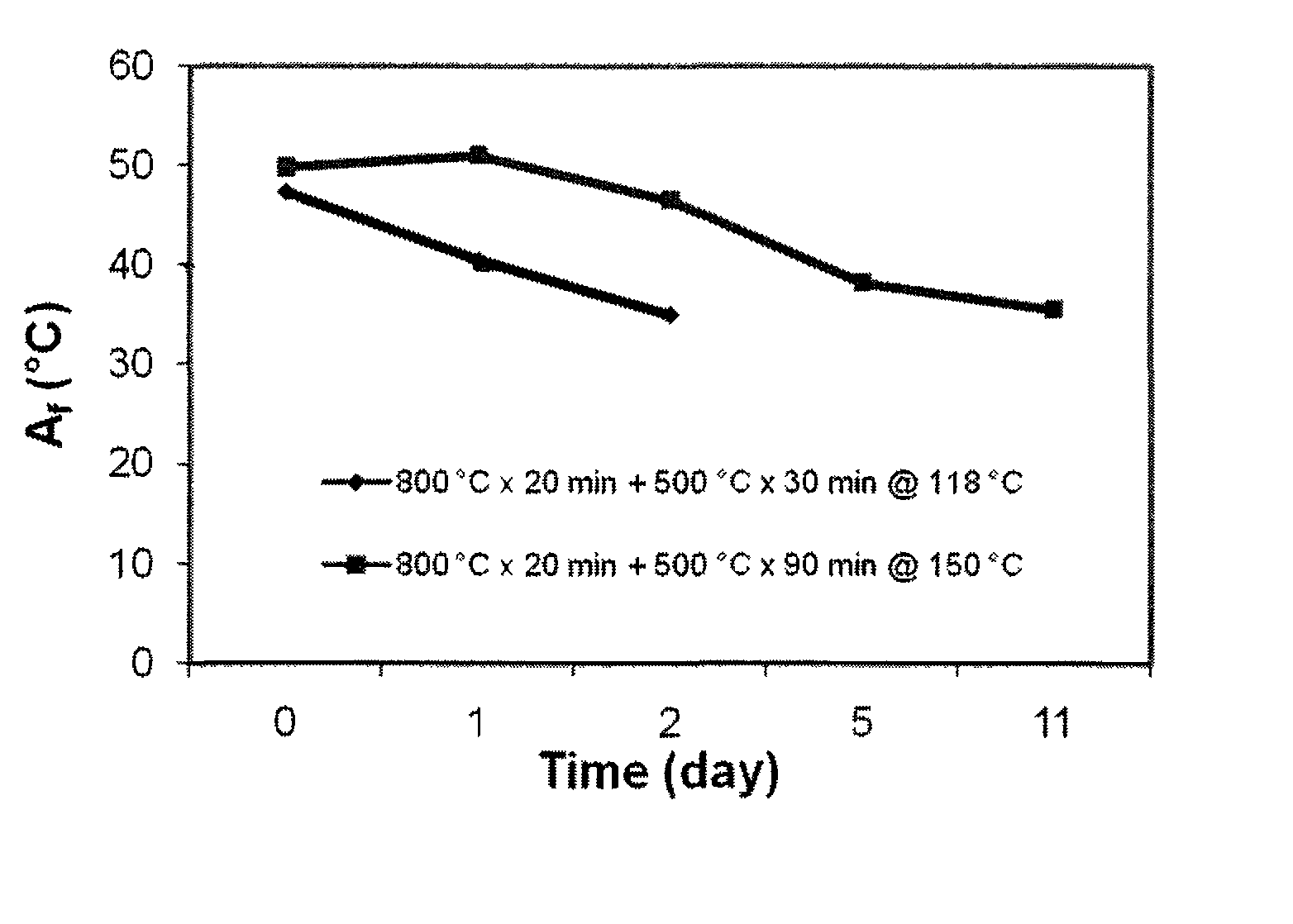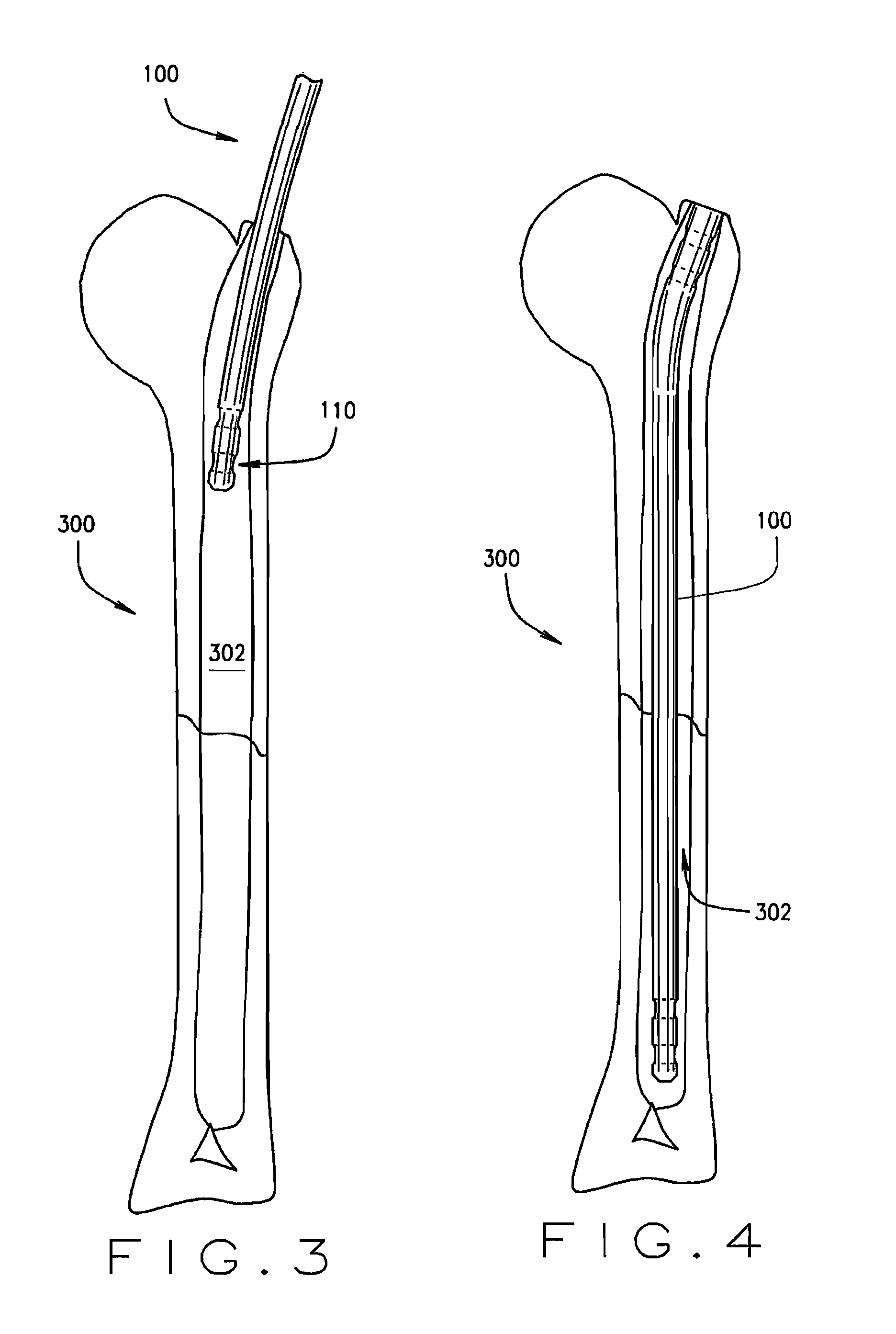Method for controlling phase transformation temperature in metal alloy of a device
a technology of phase transformation temperature and metal alloy, which is applied in the field of controlling the phase transformation temperature of metal alloy, can solve the problems of not many efficient methods for further reducing the phase transformation temperature, and achieve the effect of reducing product waste and tuning or controlling
- Summary
- Abstract
- Description
- Claims
- Application Information
AI Technical Summary
Benefits of technology
Problems solved by technology
Method used
Image
Examples
Embodiment Construction
[0036]According to the embodiment(s) of the present invention, various views are illustrated in FIG. 1-6 and like reference numerals are being used consistently throughout to refer to like and corresponding parts of the invention for all of the various views and figures of the drawing. Also, please note that the first digit(s) of the reference number for a given item or part of the invention should correspond to the FIG. number in which the item or part is first identified.
[0037]One embodiment of the present invention comprising heat treatment process for treating an alloy in order to achieve a desired transformation temperature teaches a novel method for treating an alloy utilized in a product or device such as a medical device. With the present invention, an effective heat treatment procedure is provided by treating shape memory alloys at temperatures below 250 degrees C. (more preferably between 150 and 200 degrees C.), with different duration of holding time, which depends on fi...
PUM
| Property | Measurement | Unit |
|---|---|---|
| temperature | aaaaa | aaaaa |
| temperature | aaaaa | aaaaa |
| temperature | aaaaa | aaaaa |
Abstract
Description
Claims
Application Information
 Login to view more
Login to view more - R&D Engineer
- R&D Manager
- IP Professional
- Industry Leading Data Capabilities
- Powerful AI technology
- Patent DNA Extraction
Browse by: Latest US Patents, China's latest patents, Technical Efficacy Thesaurus, Application Domain, Technology Topic.
© 2024 PatSnap. All rights reserved.Legal|Privacy policy|Modern Slavery Act Transparency Statement|Sitemap



